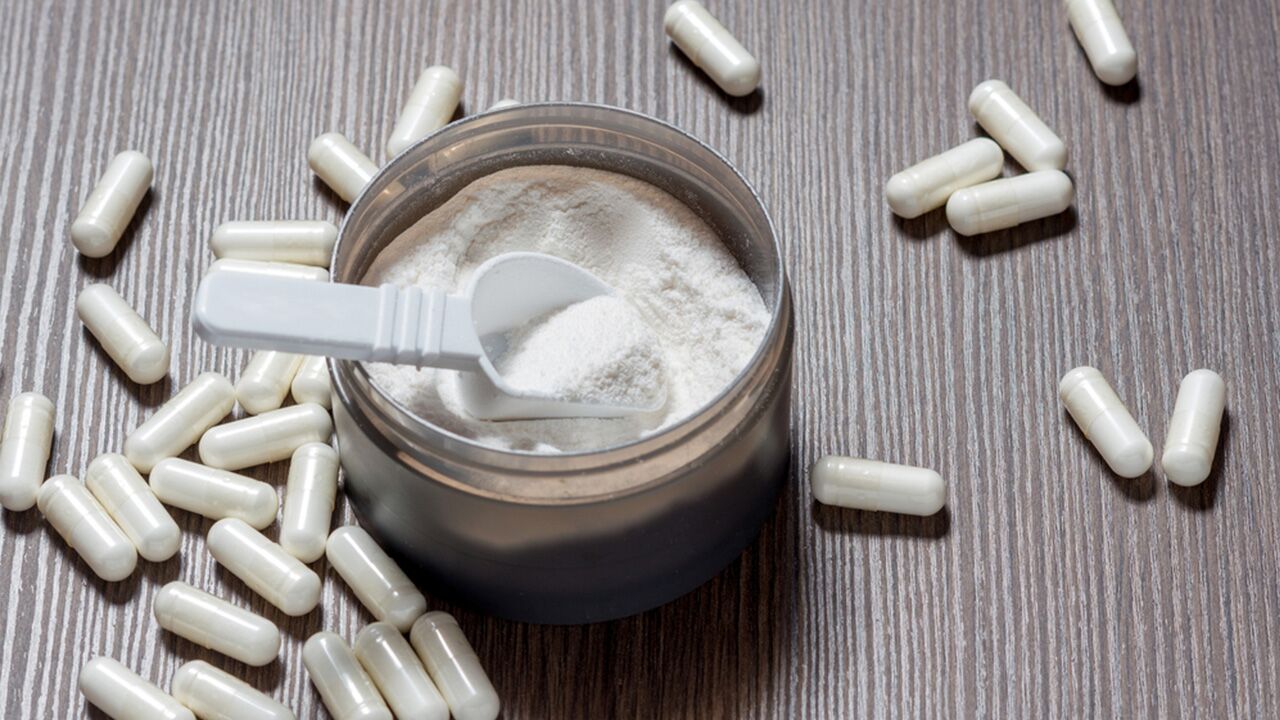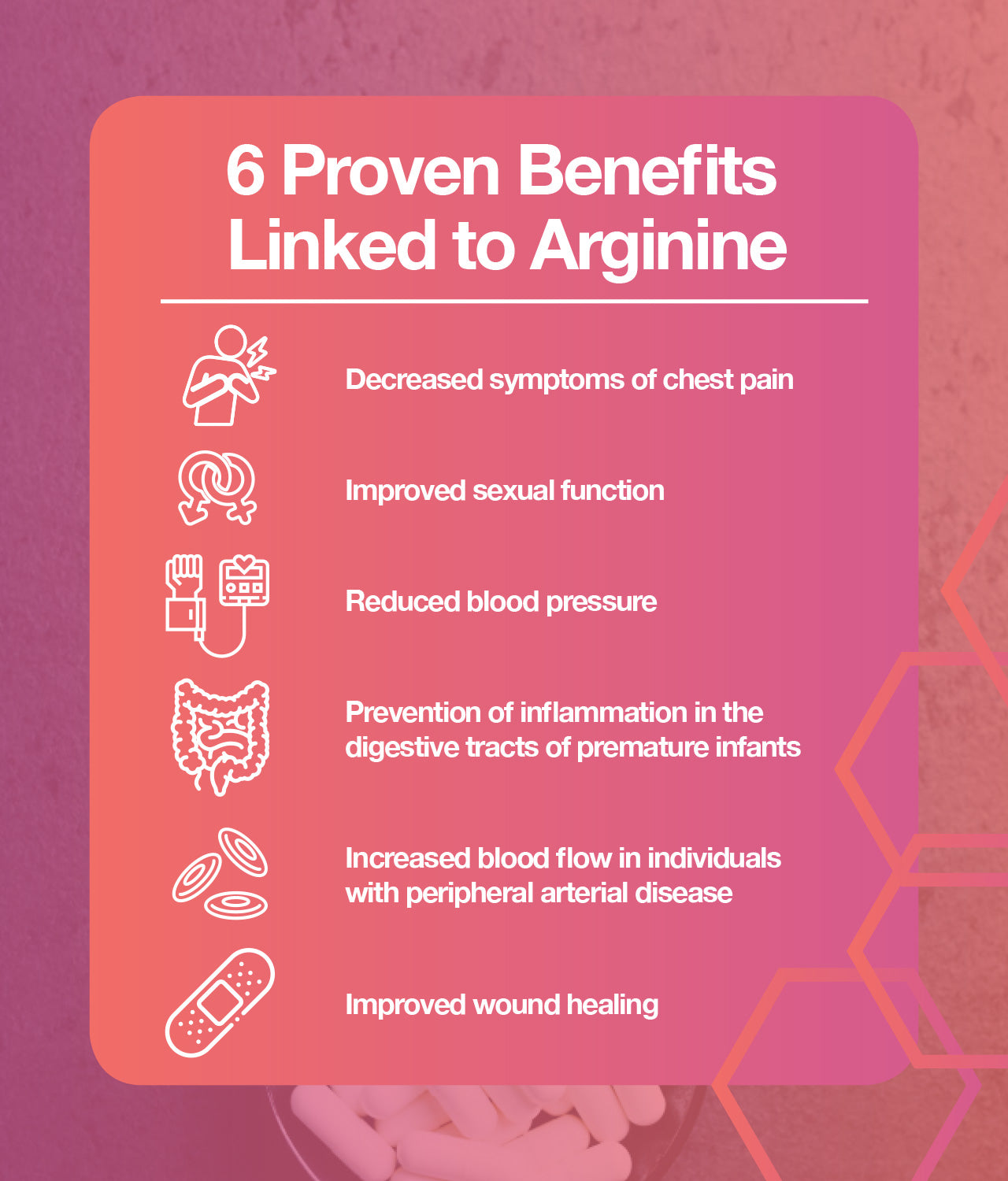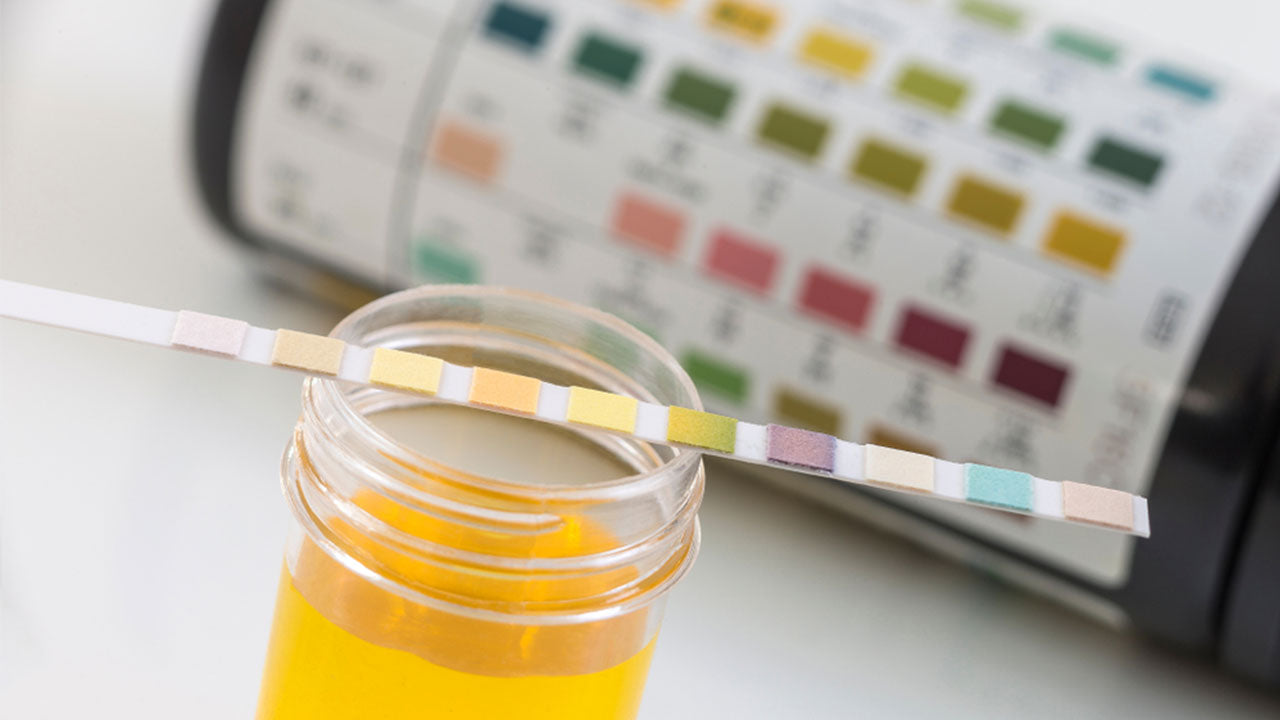All About Arginine: 4 Key Facts About This Conditionally Essential Amino Acid
 By: by Amino Science
By: by Amino Science

Arginine, also known as L-arginine, contributes to the biosynthesis of protein throughout the body. This means that your body needs to have an adequate supply of arginine to be able to build proteins, including skeletal muscle proteins. In this role, arginine plays a similar role to all the other amino acids that comprise body proteins.
Arginine is considered a conditionally essential amino acid. Under normal conditions the body can produce enough arginine to avoid symptoms of deficiency, but in stressful states, such as illness or injury, your body has an increased need for arginine.
Significant concentrations of arginine can be found in red meat, poultry, fish, and dairy products. You can try L-arginine supplementation, though research indicates that may not be the most effective method for raising blood levels of L-arginine (more on that in a later section).
In this article, we'll discuss common uses for arginine as well as four key facts about this conditionally essential amino acid that you can use to make informed decisions about your intake of arginine and other amino acids.
Top Health Benefits Linked to Arginine
Arginine is a popular supplement thanks to the plethora of benefits associated with increased plasma concentrations of arginine. Many consider L-arginine to be an anti-aging supplement because many benefits linked to higher levels of arginine offset unpleasant side effects of growing older, such as compromised immune response and decreased cognitive function, heart disease, and more.
Health care professionals have found that increasing blood levels of arginine can substantially improve the health of individuals with heart disease. Arginine is used medicinally to treat a multitude of heart and blood vessel conditions like:
- Coronary artery disease
- High blood pressure, including pulmonary hypertension
- Chest pain
- Myocardial infarction (heart attack)
- Congestive heart failure
Thanks to its positive impact on the health or your arteries, increasing your stores of arginine can also relieve a kind of recurrent leg pain (intermittent claudication) caused by arterial blockages. Arginine's ability to increase blood flow can also help resolve biological issues that present as erectile dysfunction (ED) and male infertility. As a topical cream, arginine is sometimes used to increase sexual arousal in women.
Further uses of arginine include:
- Prevention or treatment of cognitive decline
- Enhancement of athletic performance
- Optimization of immune system function
- Promotion of healthy weight loss
- Acceleration of wound healing
- Stabilization of blood sugar levels
- Restoration of kidney function following a transplant

Understanding Arginine Metabolism
Bear with us as we delve into the science of arginine metabolism. The pathways of arginine metabolism are shown in the figure below.

Arginine is part of the urea cycle that rids the body of toxic ammonia (NH3) by converting it to nontoxic urea for excretion by the kidneys. Let’s walk through the metabolism of arginine and the urea cycle step by step.
- The first step in the cycle is the combination of NH3 with carbon dioxide (CO2) to form carbamoyl phosphate.
- Carbamoyl phosphate combines with ornithine to form citrulline.
- Citrulline combines with the amino acid aspartate to form arginino-succinate.
- Arginino-succinate is then broken down to form arginine, with fumarate as a byproduct.
- Arginine is converted to ornithine, with urea as a byproduct.
The urea cycle is called a cycle because while NH3 is converted to urea, there is no net change in the key players in the cycle: arginine, ornithine, and citrulline. The conversion of arginine to ornithine, with urea as a byproduct, accounts for the majority of arginine metabolism.
There are other important pathways of arginine metabolism shown in the figure above. Notice how arginine also converts to citrulline and as a result produces nitric oxide. Or, to phrase that more technically, as an article published in Current Vascular Pharmacology did, nitric oxide is "continuously synthesized from the amino acid L-arginine in endothelial cells by the constitutive calcium-calmodulin-dependent enzyme nitric oxide synthase."
As a vasodilator, nitric oxide relaxes the inner muscles of your blood vessels and causes the vessels to widen, thereby helping to increase blood flow and lower blood pressure.
Another pathway of arginine breakdown results in the production of creatine. Creatine plays an important role in energy metabolism in muscle during exercise. Finally, some of the ornithine resulting from arginine can then be converted to polyamines.
But let’s not get lost too much in the details of the urea cycle. The minutia is less relevant for our purposes—understanding arginine's benefits for human health. The key points are:
- Arginine is a vital player in a crucial set of cyclical reactions that keep the body operating smoothly.
- A deficiency of arginine will stall the urea cycle, resulting in a buildup of toxic NH3 in the blood.
- Citrulline converts into arginine.
4 Key Facts to Know About Arginine
As touched on in the previous section, the most prominent role arginine plays in the human body is as a precursor for the production of nitric oxide. As such, arginine can benefit heart health, restore healthy blood pressure levels, and ameliorate all other functions related to nitric oxide.
Arginine is also the precursor for creatine and polyamine production. Creatine helps produce energy for exercise while polyamines are crucial to cell growth and proliferation. Scientists have found that polyamines interact with DNA and RNA in the cells of the body, and that a decrease in polyamines has been associated with aging.
Arginine can also regulate the rate of muscle protein synthesis, promote wound healing, boost immune function, and enable the waste products of protein metabolism to be excreted by the kidneys into the urine.
Now that we've covered the many functions arginine carries out within the body, let's look at four vital facts about arginine that everyone should know.

1. Arginine Is the Only Precursor of Nitric Oxide
Arginine is the only precursor of nitric oxide. As touched on previously, nitric oxide makes important contributions to a variety of physiological functions, many of which have to do with arterial health and blood flow. Most reports ascribe the cardiovascular benefits of arginine to its role in producing nitric oxide.
Nitric oxide production occurs mostly in the cells lining the vascular system and has a number of protective effects on the cardiovascular system. It helps regulate blood pressure by relaxing (dilating) the blood vessels. Nitric oxide also plays a role in maintaining the function of the central nervous system. Its role in the nervous system is particularly important in penile erection. Drugs such as sildenafil (Viagra) require at least some local nitric oxide production in order to stimulate the desired physiological response.
Only about 5% of arginine metabolism occurs via the pathway that yields nitric oxide. Nonetheless, the production of nitric oxide is highly dependent on the availability of arginine. An increase in arginine consumption, particularly due to the use of a nutritional supplement, increases nitric oxide production throughout the body, as evidenced by this 2012 study published in the American Journal of Physiology, Endocrinology, and Metabolism.
2. Arginine Stimulates Protein Synthesis
The role of arginine in regulating the synthesis of new muscle and skin protein is, in the opinion of certain experts in the field of amino acid research, under-appreciated. Under most conditions, sufficient arginine is produced to avoid any deficiency. Further, since arginine is present in most dietary proteins, it is almost always the case that there is enough arginine in the body to meet requirements for protein synthesis. Yet supplementing with arginine, when given in the context of a formulation that includes all the essential amino acids (EAAs), can amplify the stimulatory effect on protein synthesis.
The results of a study published in Clinical Nutrition in 2008 showed how increasing the proportion of arginine in an otherwise balanced mixture of amino acids from 10% to 50% of the total amino acids in the formulation significantly increased the rate of both muscle and skin protein synthesis. The effect was equal to that of increasing the proportion of leucine (the primary amino acid used in muscle building) to 50%.
Further, the increased effectiveness of the amino acid mixture with higher doses of arginine was due to the arginine itself, not to the production of nitric oxide. Arginine's effect on protein synthesis persisted even when a drug was given to block the production of nitric oxide.
Importantly, the arginine effect on protein synthesis could only be observed when all the essential amino acids were given along with the arginine—arginine alone is ineffective in stimulating protein synthesis.
3. Arginine Increases Hormone Secretion
Arginine increases the amount of insulin the pancreas releases when you eat a meal high in simple carbohydrates. This effect is independent of nitric oxide, and results in improved control of the blood glucose level, as an increased response of insulin will minimize the spike in blood sugar after a meal containing a high-carbohydrate load. Increased insulin can also have a positive effect on muscle building.
Arginine also increases the rate of growth hormone secretion (learn more about the beneficial effect amino acids have on growth hormone here). This effect is so well established that there is a clinical test in which arginine is given to determine if there is a normal response of growth hormone. However, this test requires higher doses of arginine than you would find in a commercially available supplement, typically, 30 grams.
4. Arginine Prevents Adverse Effects of Aging
Many of the benefits of arginine could be considered anti-aging. Aging can put you at an increased risk for cardiovascular disease, poor metabolic control of blood glucose levels, impaired wound healing, decreased muscle mass and function, and lower levels of growth hormone secretion. Arginine supplementation, in conjunction with a consistent supply of all the essential amino acids, can lessen the deleterious effects linked to the aging process.
Even when expressed in more subjective terms, arginine seems to benefit older individuals. Improvements in functions such as mental capacity, anxiety and stress, deep sleep, muscular capacity, sexual performance, and overall feelings of well-being have been reported in preliminary studies, although more studies in this area are required before solid conclusions can be drawn.
Best Practices for Benefiting from Supplemental Arginine
Several studies have shown that supplementing with arginine improves vascular function by overcoming the harmful effects of asymmetric dimethylarginine (ADMA), a cardiovascular risk factor. AMDA is elevated in a wide variety of conditions that increase the risk of cardiovascular disease, including hypertension, high cholesterol and triglycerides in the blood, peripheral artery disease, congestive heart failure, and preeclampsia. Other risk factors, including the blood concentrations of homocysteine, myeloperoxidase (MPO), and malondialehyde (MDA), are also improved with daily arginine supplementation.
A wide variety of other benefits stemming from the use of oral arginine have been purported, including:
- Wound healing: The benefits of arginine supplementation on wound healing have been documented for more than 50 years.
- Exercise performance: Some research indicates arginine supplementation can enhance exercise performance, but not all studies demonstrate this effect.
- Immune function: Arginine supplementation combined with omega-3 fatty acids has been anecdotally recommended as a means of decreasing infections among individuals with diabetes, forestalling organ transplant rejection, and alleviating other inflammatory conditions, although these later claims have not been substantiated in clinical trials.
Side Effects of Arginine Supplementation
The most common side effects of arginine supplementation are abdominal pain and diarrhea. Other less common responses may include gout, bloating, low blood pressure, and allergies.
However, these side effects are observed only with higher doses in the 15- to 30-gram range. Much smaller doses can have beneficial effects in terms of nitric oxide production and stimulation of muscle protein synthesis. The side effects will also be minimized when arginine is provided in the context of a complete formulation of essential amino acids.
Arginine or Citrulline Supplementation: Which Is Better?
While this may seem counterintuitive, when equal amounts of citrulline (also known as L-citrulline) and arginine are given, the blood level of arginine actually increases more after citrulline consumption, but that is the case.
Citrulline is able to increase arginine levels more so than arginine because arginine metabolism occurs largely in the liver. As arginine is absorbed by the gastrointestinal tract, it must pass through the liver before reaching the peripheral circulation. Most of the arginine is extracted by the liver before it ever reaches the peripheral blood.
In contrast, not much citrulline is taken up by the liver, so it reaches the peripheral circulation more readily. When blood containing large amounts of citrulline circulates through the kidneys, the citrulline is efficiently taken up and converted to arginine, which is then released into the peripheral blood. The result is that the blood arginine level actually increases more when citrulline is consumed than when the same amount of arginine is consumed.
For this reason, citrulline may be a better choice as a nutritional supplement than arginine, not only because a smaller amount of citrulline can give the same effect as a larger dose of arginine, but also because the incidence of gastrointestinal distress will be less after citrulline consumption.
That's why Amino Company scientists formulated our Athletic Performance and Active Aging blends with citrulline instead of arginine, as well as a balanced ratio of all the essential amino acids.


Up to 25% off Amino
Shop NowTAGS: knowledge
Join the Community
Comments (0)
Most Craveable Recipes




 833-264-6620
833-264-6620



















